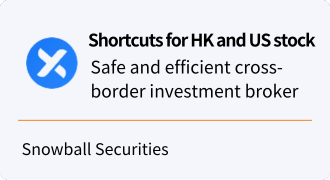U.S. Stock Market Closure Schedule
[DISCLAIMER] This article is for educational and informational purposes only and does not constitute investment advice. Readers should consult with qualified financial professionals before making any investment decisions.
Knowing when the U.S. stock market is closed is important for every investor. As an independent journalist specializing in quantitative finance and IT, I am committed to helping the general public to become financially literate. In this article, I will introduce the closing hours of the U.S. stock market to help you plan your trading strategy and avoid unnecessary losses due to the market closure.
Ⅰ. Why is it important to know when the market is closed?

In the U.S. stock market, market closures can affect your trading plan and investment decisions. Knowing these times will not only help you avoid trading when the market is closed, but will also allow you to better capitalize on opportunities when the market is open. Below is a detailed schedule of U.S. stock market closures.
Ⅱ. U.S. Stock Market Annual Holiday Closures (EST)
- New Year's Day (New Year's Day):Closed for one day (the first day of the new calendar year).
- Martin Luther King Jr. Day (Dr. Martin Luther King Jr. Day):Closed for one day (the third Monday of January).
- Washington's Day (President's Day):Closed for one day (3rd Monday in February).
- Good Friday:Closed one day (the first Friday after the full moon on the spring equinox or two days before Easter).
- Memorial Day:Closed for one day (the last Monday in May).
- Independence Day Eve:Close three hours earlier (the day before July 4th).
- Independence Day:The market is closed for one day (July 4 each year).
- Labor Day in the United States:Closed for one day (the first Monday in September).
- Thanksgiving Day:Closed for one day (the fourth Thursday of November).
- Thanksgiving Day After:Closing three hours earlier (the day after Thanksgiving Day).
- Christmas Eve:Close three hours in advance (December 24 every year).
- Christmas Day:Closed for one day (December 25 every year).
Ⅲ. Daylight Saving Time and Winter Time
The United States observes Daylight Saving Time and Winter Time, which affects trading hours. Understanding these changes is especially important for investors across time zones.
3.1 Daylight Saving Time (Daylight Saving Time is used from early April to early November each year)
- Normal trading hours: 21:30 BST - 4:00 AM the next day (9:30 to 16:00 EST)
- Pre-market trading hours: Beijing time 16:00-21:30 (EST 4:00-9:30)
- After-hours trading: Beijing time 4:00-8:00 (EST 16:00-20:00)
3.2 Winter Time (Winter Time is used from early November to early April each year)
- Normal trading hours: 22:30 Beijing time - 5:00 am the next day (EST 9:30 to 16:00)
- Pre-market trading hours: Beijing time 17:00-22:30 (EST 4:00-9:30)
- After-hours trading: Beijing time 5:00-9:00 (EST 16:00-20:00)
Thoughts
Knowing when the U.S. stock market is closed is not only for avoiding trading during the closure, but more importantly, it can help you better plan your investment strategy. For example, before and after the holidays, when the market is usually more volatile, knowing these times allows you to prepare in advance to take advantage of investment opportunities or avoid risks.
By knowing when the U.S. stock market is closed, you can better plan your trading strategy and achieve your investment goals. If you have any questions or need further guidance, please feel free to leave a message in the group and I will do my best to answer them.







